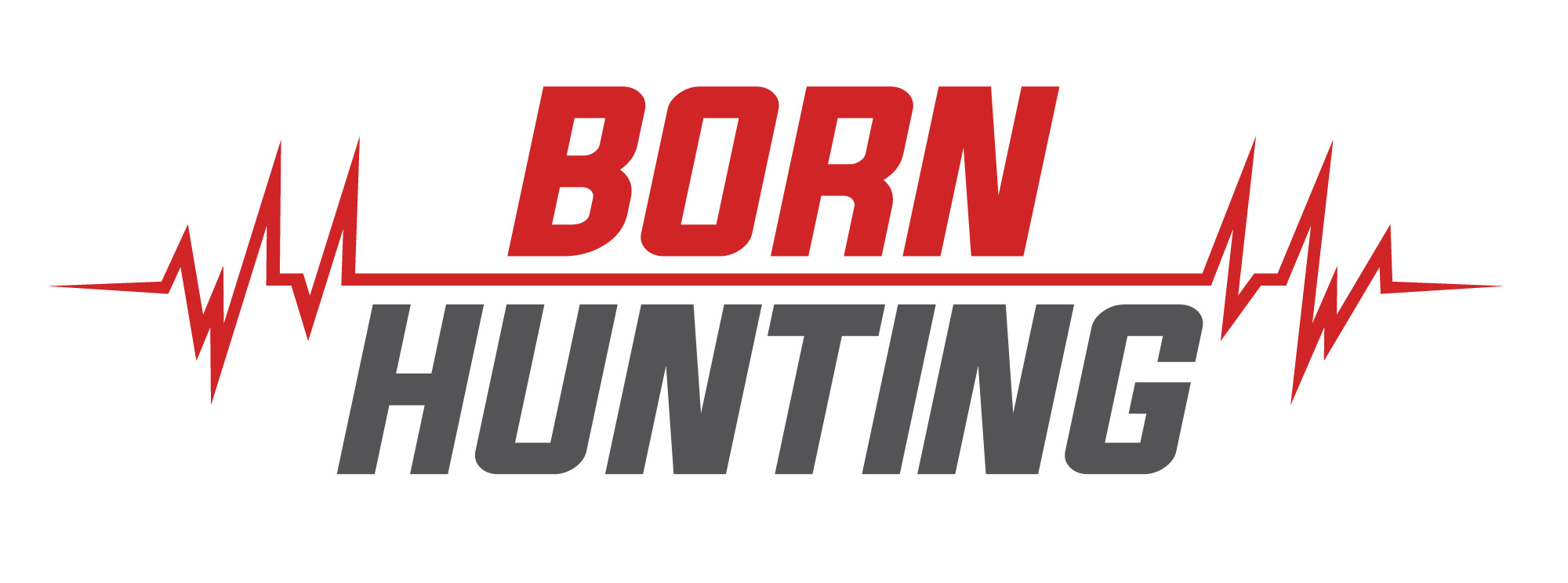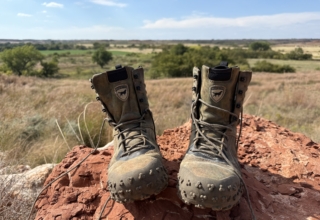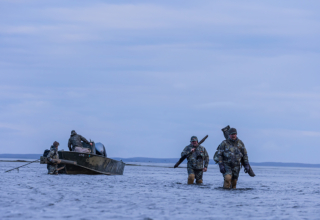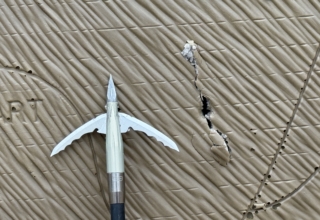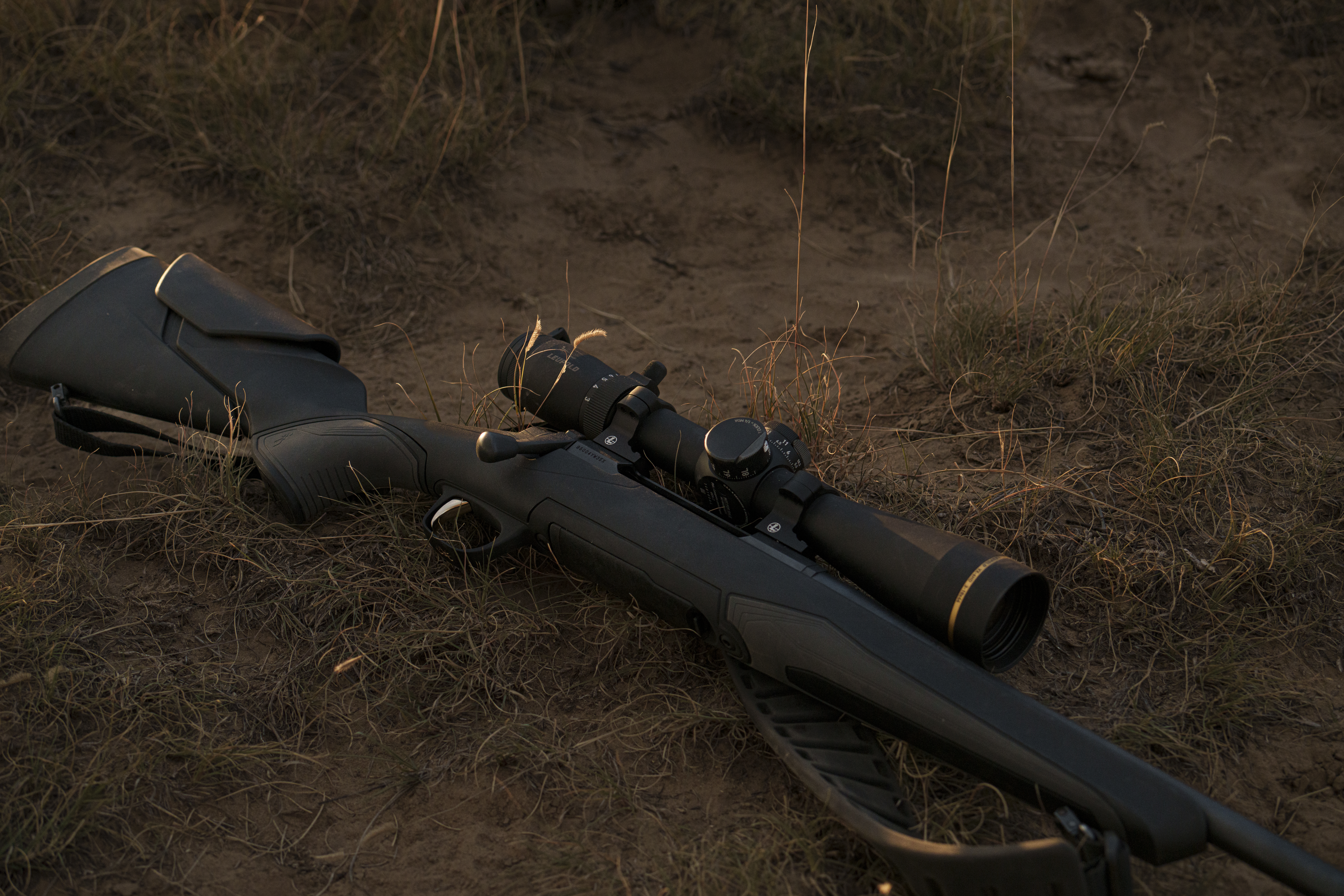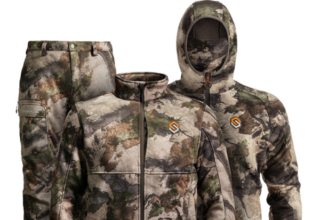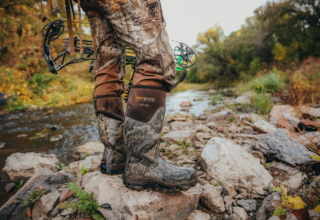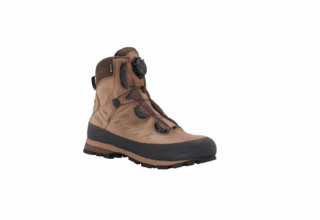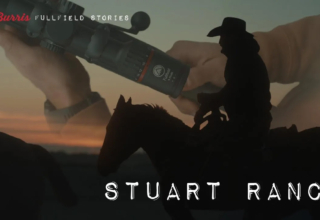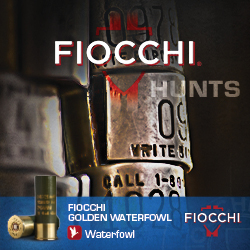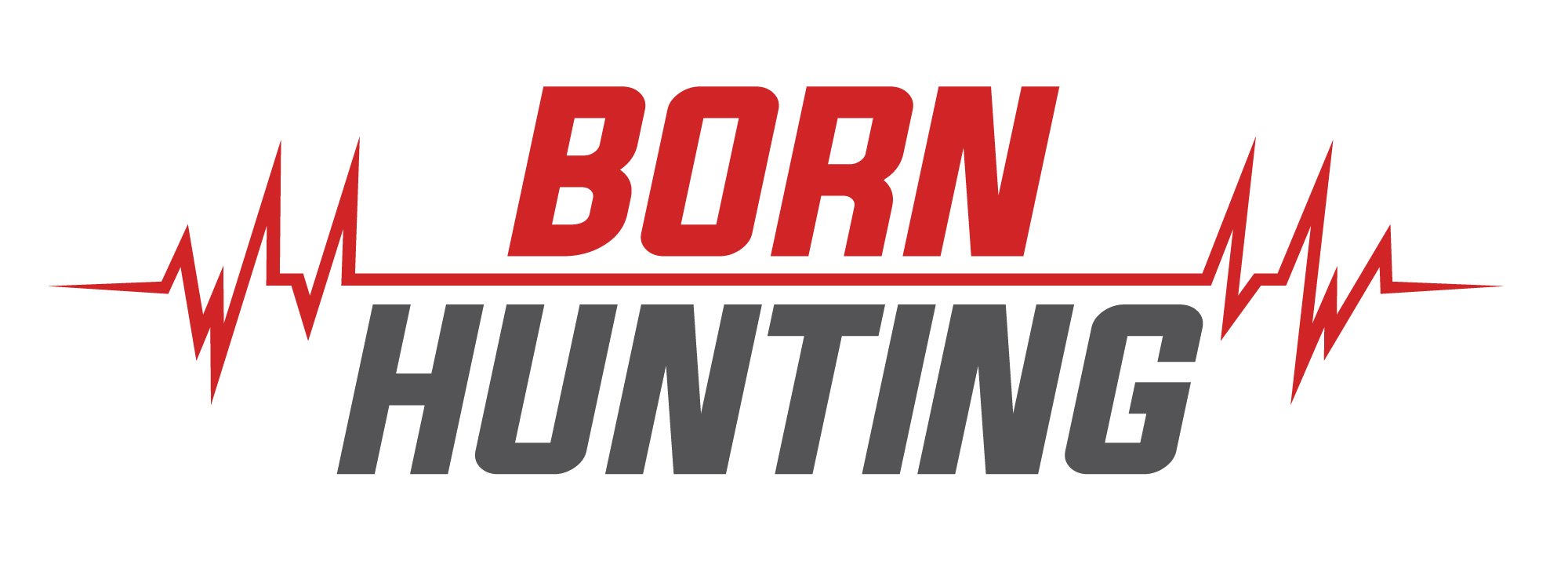Summertime training tips and tactics that will have your hunting dog ready for the opener, and in the best shape of its life.
by Scott Haugen
July and August are challenging months for gun dog owners. Days are hot, and families are busy. But with hunting season fast approaching, training and keeping your dog in shape are critical. Here’s a routine I’ve had great success with during summertime dog training.
Get ‘Em In Shape
My number one pet peeve is hunting with an overweight dog. Not only are overweight dogs less efficient, but they also easily tire and become lazy, which can lead to disobedience. Even worse, overweight dogs live shorter lives and have more health issues. Owners need to control their dog’s weight.
Keeping a dog in hunting shape is a challenge in the heat. The key to understanding is that tossing a bumper into the water a few times—even 20 or 30 time—isn’t conditioning. Those are short bursts of energy. They’re better than nothing and allow for vital training to take place, but that’s not conditioning.
This time of year I rely on three things to keep my dogs in shape. First is running hills. My pudelpointers have narrow backends, and running hills keep their power source lean and in good condition. I’ll do this twice a week, early in the morning or late in the evening, when temperatures have cooled. My entire summer training regiment is built around the weather, so I monitor it closely, and so should you.
It’s best if you can road your dogs with an ATV or electric bike during summertime running sessions. The longer they can run, the better shape they’ll be in. The hills don’t have to be steep, just enough of a slope to keep the dogs working.
Running them on flat ground is also a good workout. Do this once or twice a week, depending on how many days you spend on the hills. Having an e-bike or mountain bike will allow you to maintain speed and keep the dogs moving next to you. Three miles is perfect for my dogs. Be sure to have plenty of water and make certain their pads aren’t getting rubbed raw if training on rocky terrain. Avoid running on any rock, cement, or asphalt when direct sun is on it. You will burn your dog’s feet.
My favorite summertime training conditioning workout is swimming. Again, this doesn’t mean tossing a bumper into the lake 20 times. It means swimming the dogs for extended periods; 12-15 minutes is right for my dogs. Paddling alongside them in a canoe, kayak, or even paddle board is perfect for keeping them active and having fun.

Swimming is a low-impact workout that’s gentle on the joints and muscles, making it an excellent choice for aging dogs. Avoid mid-day swims, as they can be dangerous and cause overheating in dogs.
Cover The Basics
Sit and come are the two most used commands by hunters. The teaching and reinforcement of these directions never stop during a dog’s life, and summer time is a great time to reiterate these common commands in controlled situations.
I do a lot of basic command training inside the house. Not only do the dogs like this because it breaks up the monotony of lying around, but the confines inside a house eliminate many distractions. Start in a hallway and have the dog focus on you. Shut all the doors in the hall. Here, verbal commands can be delivered, and your proximity to the dog allows for maximum eye contact. Eye contact is one of the most important aspects of dog training, and having a dog’s undivided attention inside the house streamlines this form of communication.
Next comes the teaching and reinforcement of hand signals. Order the dog to sit at one end of the hall. Next, hide a bumper or ball in a room at the other end of the hallway. Return to the dog and send it to fetch, but stop it before it enters a room. With the dog looking at you, make eye contact and give a firm, verbal fetch along with an open hand signaling which direction you want the dog to go. As the dog progresses, multiple balls or bumpers can be placed in different rooms, increasing the challenge and joy of this drill.
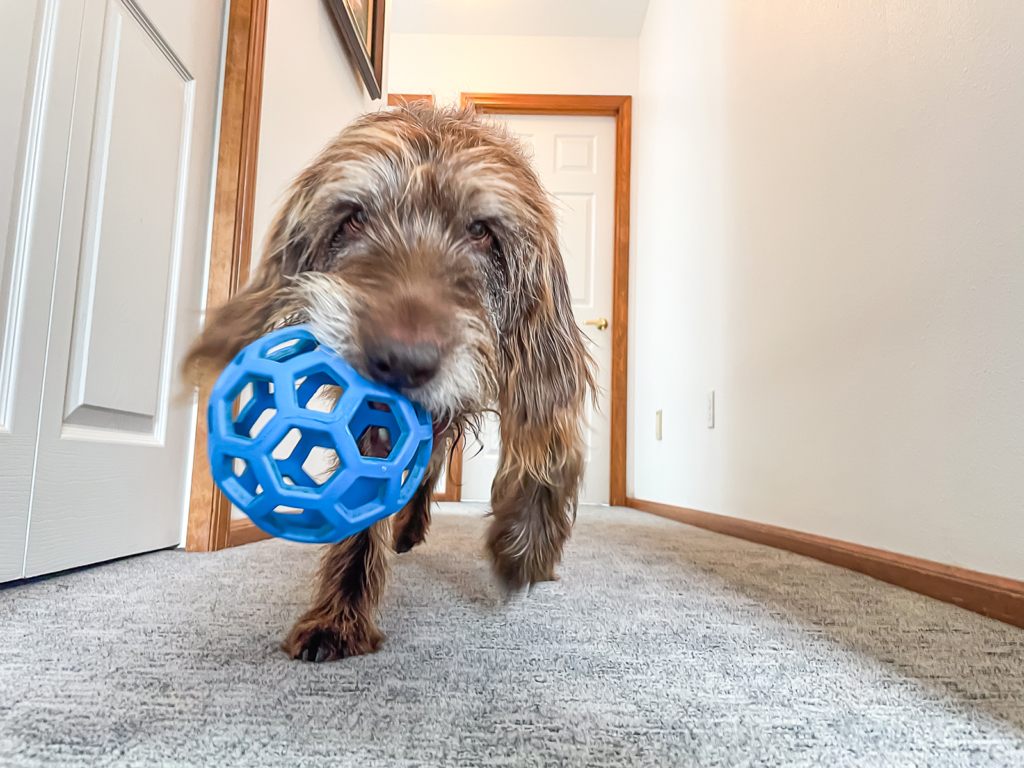
Even e-collars can be used during inside training. In the field, communicating with beeps is more efficient than yelling. A dog moving through brush, swimming for a duck, even panting heavily, may not hear your voice commands. But beeping the collar will immediately get their attention.
I taught my dogs to respond to different beeps. One beep stops them and gets them looking to me for hand signal directions. Two beeps prompt them to move in my direction. Continuous beeping means danger—think crossing a road, approaching a porcupine, or a dangerous section of river—where the dogs immediately stop and sprint back to me. All of this work can be done inside a cool, air-conditioned house.
For More The Best Summer Dog Training Gear CLICK HERE!
Training Time
My outside summer training sessions are short, two to three minutes each, twice a day. Pick one thing you want to work on. Keep the training focused and positive for the dog.
If honing multiple directional retrieves is the goal, have the gear ready when the dog exits its kennel. If breaking at the shot needs to be remedied, have a buddy shoot so you can hold the dog. When running a ladder drill or baseball diamond drill, stop if your pup nails it the first time. If it fails, try again, but don’t push the dog too hard if the heat exacerbates the issue. It’s better to stop and revisit it, than try and push through it in excessive heat. You always have to have safety in mind during summertime dog training sessions. A dog that’s lost interest and focus is hard to train, and if they overheat there’s no getting them back. Try again in the evening or the following day.
If you hunt with two dogs, be sure to devote training time to both together. Bumper drills, blind retrieves, directional training with hand signals, and even pushing them back are good things to focus on. Work on the challenges you know they’ll face come hunting season.

If your dogs compete for a bird when hunting, summertime training sessions are the time to address the issue. If you don’t have access to live birds for training, use bird wings or even dried bird skins secured to a bumper. You need something that stimulates the prey drive, allowing you to control the dog’s behavior.
Because I hunt a lot in brushy habitats, I devote training time to tossing bumpers and shooting bumper launchers over briar patches, into fern thickets, across creeks, and into ponds and rivers. Each scenario is excellent for teaching your dog to mark, negotiate varied habitats, and deliver to hand.
Avoid training in grassy fields where dangerous seeds may be present. Even harvested fields will have sharp, burrowing seeds that can be very dangerous for a dog and, in some cases, even lethal. Inspect your dog’s feet, eyes, and ears for grass seeds after every workout or training session.
Healthy Eats
While exercise is essential to keep your dog in good hunting shape, determining the proper amount can be challenging during the hot summer days. Hyperthermia is more dangerous and more common than hypothermia. We pay close attention to our dogs when hunting on cold days. However, on hot days, we assume they’ll call it quits when the training becomes too complex, or they’re too hot. By the time they stop, it can be too late.
Summer conditioning through running and swimming is important for weight maintenance, but a proper diet is where weight management begins and is an essential summertime training tool. Some gun dog owners prefer to feed their dogs once a day. Others, twice a day.
During hunting season, I usually feed my dogs once a day. A single large meal after a day of hunting maximizes nutrient absorption, thereby replenishing energy stores and optimizing muscle repair.
During the summer months, I feed my dogs twice a day, right after each outside training session. I add water to each meal, which is essential in keeping them hydrated on hot days. I’d rather they hydrate twice a day than once a day.
I also feed less dry kibble in the summer and boost their raw food intake. My kibble of choice is NutriSource grain-free formulas because they deliver compact
nutrition and include prebiotics and probiotics to help support a healthy gut. Check the label before choosing dog food; don’t let price and marketing influence your decision. Some of the most heavily marketed, yet least expensive, dog foods are among the most detrimental to your dog. Having a balanced intake of Omega-3 and Omega-6 fatty acids, along with supplementation of L-carnitine, taurine, choline chloride, and DL-methionine, boosts overall health, including the bladder, heart, and more. All are essential for a dog’s diet.
We save scraps from the fish we catch, as well as bones and scrap meat from big game and birds. Even the internal organs, including gizzards, are saved for our dogs. These high-protein options contain a lot of moisture, which is essential for a dog’s health in the summer. I mix one part kibble to 1/2 part water and 1/2 part raw for each summer meal.
I also increase the number of water bowls inside and outside the house in the summer. This encourages the dogs to drink. They can’t get too much water this time of year.
Another step I take in summer is to give my dogs healthy, frozen treats a few times a day. I make my own using NutriSource Come-pooch-a and blueberries, raspberries, or blackberries from the garden. Come-pooch-a is a savory, meaty bone broth that’s packed with activated postbiotics from fermentation that promote a healthy gut and digestion support in dogs. It can be used as a topper, but I make ice cubes from it, placing a berry or two in each one.
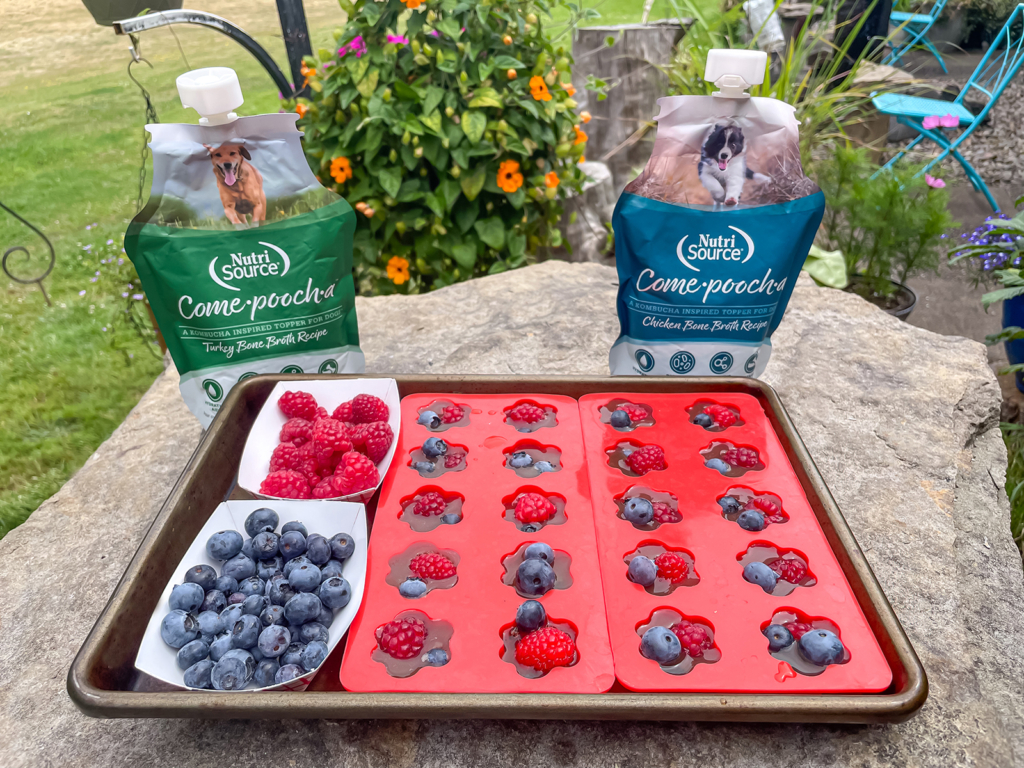
Blueberries are packed with vitamins, minerals, and antioxidants and are low in calories, making them a great summer treat for your dog. Raspberries are low in calories but high in fiber, manganese, vitamin C, and antioxidants, which can be beneficial for a dog’s overall health. Blackberries offer vitamins and antioxidants. In addition to freezing these berries with the Come-pooch-a, I’ll feed them to the dogs each day when we’re outside, right off the vine. Carrots, watermelon, kale, and peas also make up my dog’s summer diet. Start by giving these items in moderation to avoid digestive issues. Once you introduce these summertime fruits and veggies they can make up 10 percent of their daily intake, collectively.
Never give your dog unhealthy table scraps. Pizza crust, salty chicken skin, spicy foods, potato with butter, and the cooked fat trimmings of a steak are not suitable for your dog. They’re hard to digest and loaded with calories dogs do not need. This isn’t just a summertime training tip. Tis tip should is for year-round training.
As hunting season approaches, prepare your dog for the season by providing a healthy diet and regular exercise, both early and late in the day. Water is crucial for conditioning and keeping dogs hydrated during the hot summer weeks. Come opening day, you want your dog hunting at full speed, not struggling because it’s overweight and out of shape.
Bio’: Scott Haugen is a full-time writer. See his basic puppy training videos at scotthaugen.com & follow him on Instagram & Facebook.
